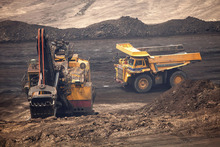Apr 13, 2015

Atlas Iron
Australia’s fourth-largest iron ore supplier will suspend all operations this month in response to a slump in prices to their lowest in a decade.
The company is the biggest casualty in Australia of a collapse in the price of the steelmaking material, caused by a glut in supply and cooling demand in China, its largest consumer. Australia, led by Rio Tinto and BHP Billiton, is the world’s top exporter of iron ore.
“This is something of a watershed moment,” said Paul Gait, a London-based analyst at Sanford C. Bernstein. “It’s the first of the producing Australian miners from the best supply location to close.”
Atlas, which had forecast output in the year through June of as much as 13 million tonnes, said its operations are no longer viable and would be put into care and maintenance, pending future market conditions, according to a statement. Discussions with creditors have begun, the Perth-based company said.
Output at Mt Webber will halt this week, its Abydos project is scheduled to cease within 14 days, while the Wodgina mine will be closed late this month, Atlas said. Its operations are in Australia’s iron-ore rich Pilbara region.
Iron ore has plunged 59 per cent in the past year as larger, lower-cost producers, including BHP and Brazil’s Vale, raised output just as growth slowed in China. Global iron ore demand will contract this year, according to Deutsche Bank.
“To suspend our operations, with the impact that will have on so many committed and talented people, is an extremely difficult decision,” said managing director Ken Brinsden.
The producer employs about 575 staff and contractors.
Atlas, the second-worst performing Australian mining company in the past year, suspended its shares from trading last week, saying it was reviewing operations in response to the price plunge. It had targeted annual savings of as much as A$120 million ($122 million) by June, according to a February filing.
Rio Tinto, the world’s second-biggest iron ore supplier, forecasts 80 million tonnes of higher-cost iron ore production will exit the world market in 2015, with a further 85 million tonnes vulnerable to lower prices. In its statement, Atlas said the timing of a recovery remains unclear.
The producer’s decision to halt its output isn’t likely to spur a rally in the steelmaking ingredient’s price, according to Bernstein’s Gait.
A global seaborne surplus is forecast to grow to 184 million in 2018 from 55 million tonnes this year, Morgan Stanley estimates.
“It’s a positive for iron ore, but it doesn’t mean to say that the price will go up,” Gait said. “What it means is that the price will be higher than it otherwise would have been – if it falls again, it won’t fall as far.”
Atlas said it is now in talks with its creditors on options that would enable its mines to restart.
The producer had drawn down US$269.5 million ($357 million) of its December 2017 US term loan facility as of December 31, it said in a February filing. Net debt increased by A$131.4 million to A$169 million in the final six months of 2014 as iron ore prices plunged and the Aussie dollar fell, Atlas said.
Atlas had its credit ratings cut by two steps and put on review for further possible downgrades by both Moody’s Investors Service and Standard & Poor’s this month. S&P reduced its score to CCC, eight steps below investment grade, while Moody’s took it down two notches to Caa3, one level lower.
